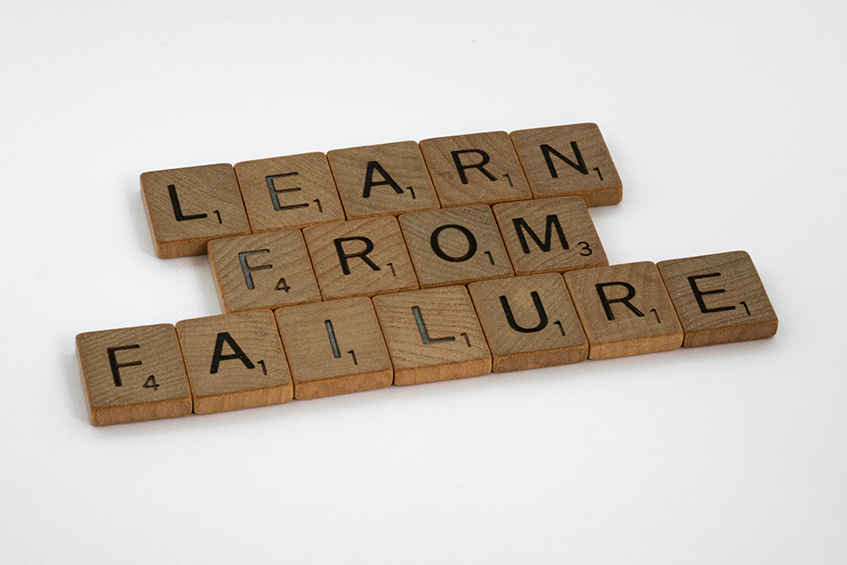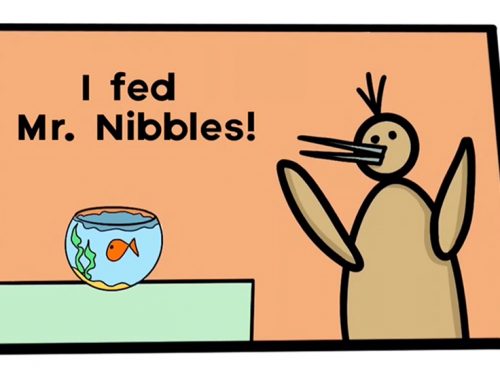Failure is not a dirty word. And yet–
When asked a few years ago to share a failure from the week, well, it was an interesting experience. I knew intellectually that failure is part of learning. We champion that in our classrooms. We design activities that focused on iteration (failing and trying again). And yet–
There was still some flinching at the word “failure”, both physical and emotional. As an adult, I still took failure personally, even when I knew in my head not to. We have a window of opportunity to help students learn in a deep way while they are young that failure is nothing to be embarrassed about.
The phrase “failed entrepreneur” is redundant. Entrepreneurs know they will likely “fail” many times before success, it is part of being an entrepreneur. Like science, businesses are a series of experiments. Scientists don’t expect every experiment to succeed! Often they learn more and faster from failure than success. Same with entrepreneurs. Same with learners. The inventors of Twitter, LinkedIn, and Gopro all have large “failures” in their portfolios. That is because entrepreneurs can’t learn what idea will work without being willing to discover what won’t work.
Failure is not final. Most of my school experiences taught the opposite–I got one shot at a test or an assignment, and there were no re-dos or trying again. An “F” was a final failure. In order for failure to be a powerful part of learning and success, it has to be seen as a step, not a destination. We are teaching the kids the following acronym and I’ve been saying it like a mantra:
Building multiple attempts into the learning environment is how we transform failure into something that’s not icky. Taking the time to reflect and analyze why something didn’t perform as expected is necessary in order to learn from each attempt. These two strategies can be applied to many learning environments and subjects. But there are also plenty of lessons taught around the world that don’t employ these strategies. They aren’t technically necessary for traditional learning. Entrepreneurship, however, requires seeing failure as a necessary step in the process toward success. This gives it a particular edge as a learning tool.
In the start-up world, the phrase “fail fast” or “fail forward” are common. The idea is to get out of the theoretical and into the testing phase as soon as possible so you can weed out the bad ideas from the good thereby saving money, time, and resources. Failure is built into the process of success. Start-ups keep it simple, both in scale and complexity to allow them to fail fast but also recover fast. They can make changes quickly, or even change direction because they haven’t scaled up yet. In such a state, they can more quickly identify things that aren’t working.
There are so many ways that entrepreneurs can fail! And that is actually a good thing! Failure is broken up into lots of little parts which makes each little failure less threatening. It also turns failure into a puzzle or mystery to solve. For example, a great product could fail to sell well because of a number of reasons that have nothing to do with the quality of the product, like advertising, packaging, branding, or marketing. This chips away at all-or-nothing thinking. There is never a business that was all bad!

Entrepreneurs have to learn by doing. It isn’t possible to anticipate every need of the customer. No one can just think long and hard enough about a plan in order to ensure success. A business plan is just a starting point. Through failure, that plan develops and adapts, and becomes sophisticated and nuanced. For our Holiday Market, we ask the students to do a lot of thinking, questioning, and planning before they start making. But we give them opportunities to test and adjust before they take their goods to market. For example, if they are doing food, they make samples for the class to try and get feedback.
Finally, being an entrepreneur means accepting that there are things out of your control. Have you noticed that risk-averse people as well as perfectionists share a love of control? Entrepreneurs can’t control all the factors that affect their success. They have to focus on the things that they can control and there is a certain freedom in that. I had a coach that used to say “let the chips fall where they may” at the beginning of every competition. This was the shorthand of the lecture he’d given us many times: prepare the best YOU can, do YOUR best, and whether you win or lose, you did what was in your control and you did it well. Let the chips fall where they may.
It breaks my heart a little when I see a student refuse to even try a project because they are afraid of the results. Or, I see a student sloppily rush through a project and not really give it their all for the same reason. Then they aren’t failing, because they didn’t really try. This approach to life is a very limiting one. I told myself that I didn’t want to study music in college because approaching music academically would ruin it for me, take out all the joy. The truth is, I was afraid of not being awesome at it right away. If a student persists in this mentality, what doors will they never even approach because of fear of failure?
Entrepreneurship gives students the courage to open the door to failure, growth, and learning. Learn more about the Link Education programs by clicking here.





